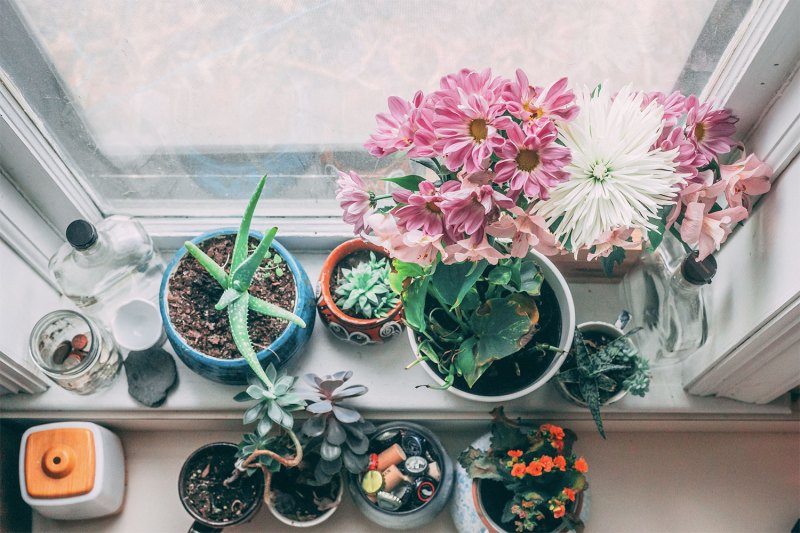
Looking to beat the heat this summer without using an air conditioner? Well, then lucky for you because we’ve made a roundup of some fantastic cooling options designed to be as easy on the environment as they will be on your electric bill.
From hacks for purifying the air around you to ones ideal for quelling your own internal boiling point, these picks are sure to cool you down and keep you feeling breezy all season long!
Aroma Diffuser

An easy way to chill out a space is to utilize an aroma diffuser. You can usually snag a quality one for around $30 (like this one from Pure Enrichment), and you’ll be amazed by the difference it makes. Simply fill with water and add a few drops of eucalyptus or citrus essential oil to the basin. In a matter of minutes, the room will fill with a soothing mist that’ll help relax the mind and regulate the body’s internal thermometer.
Plants

Another simple cooling solution is to populate your home with some indoor plants. Verdant gems like aloe vera, snake plants, and ficus trees have been shown to purify the air around them via a process called “transpiration,” in which they actively emit water into space. Certain ferns, palm trees, and rubber plants can also do the trick.
Linen Sheets

If you’re a hot sleeper, you may want to consider swapping out your cotton sheets for ones made of linen (such as those made by Brooklinen). Though they have a distinctly crisp texture that takes some getting used to, linen sheets are actually more breathable, cooling, and lightweight than their cotton peers. Plus, they’re moisture-wicking, which means they absorb and dissipate body heat with ease.
Towel Trick

An hour before you want to go to bed, soak a hand towel in some water, wringing it out until it’s just damp. Then, place it in the freezer. Once you’re ready to snooze, take it out and bring it to bed with you, pressing it to your chest, face, and neck as you lay down. Though it may feel a bit shocking, the icy cloth will help lower your body’s temperature, thereby preparing you for sleep. For an added bonus, add a dash of relaxing lavender oil to the towel before freezing.
Face Mist

For something quick and instant, try using a face mist. All you have to do is spritz your mug with the concoction a few times and you’ll immediately feel cooler. There are several different types available online, but we recommend this one by Mario Bedescu, which uses aloe, green tea, and cucumber extracts to actively soothe the skin.
Peppermint Lotion

Perhaps a bit too strong in its natural state, peppermint oil can do a lot to mitigate overheating when incorporated into a lotion or cream. Apply where you like, though massaging at the temples can be particularly effective for alleviating tension headaches caused by heat. Any peppermint lotion will do, but we especially like this lavender and peppermint blend from C.O. Bigelow.


